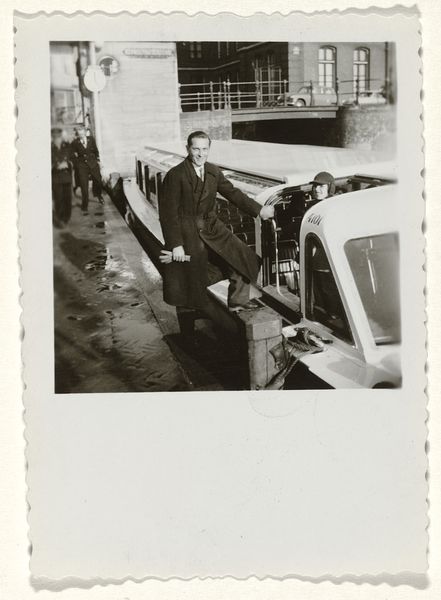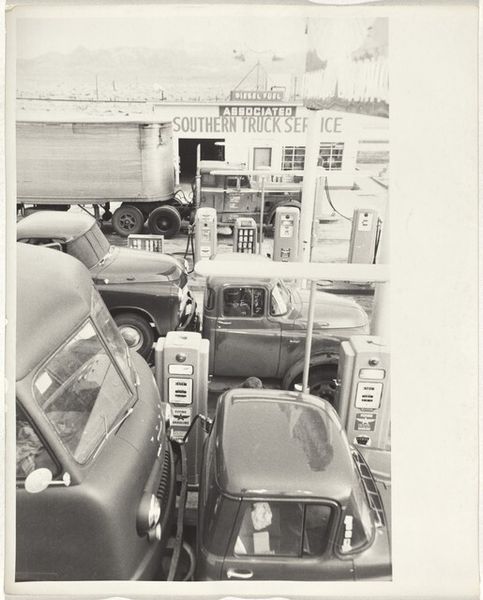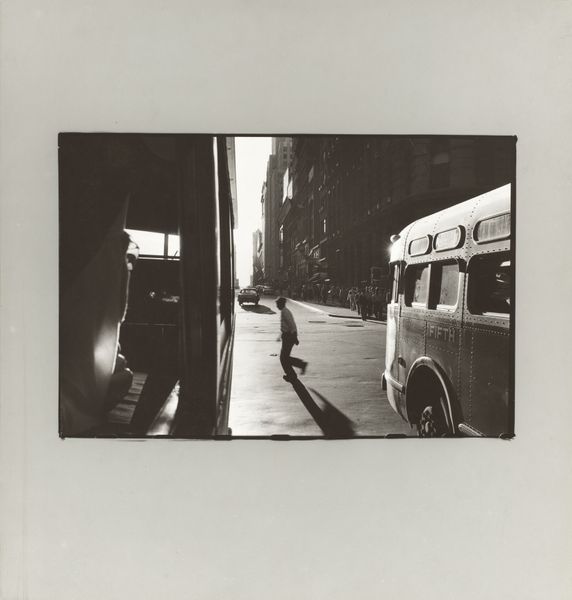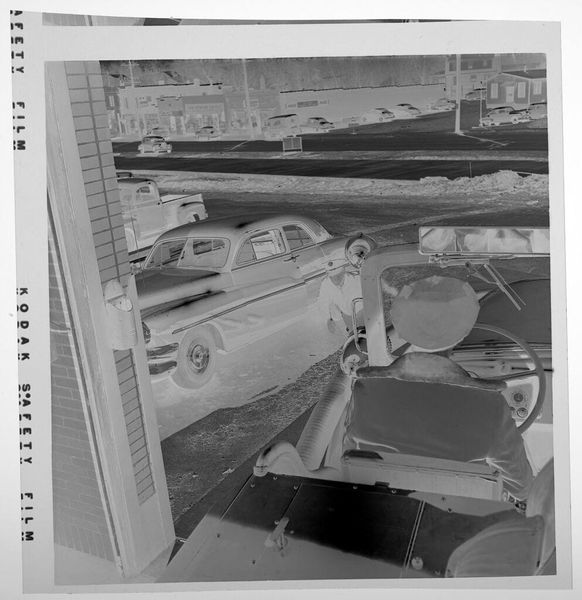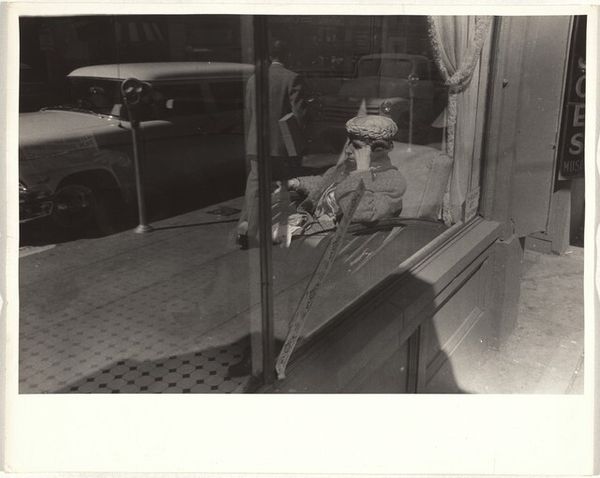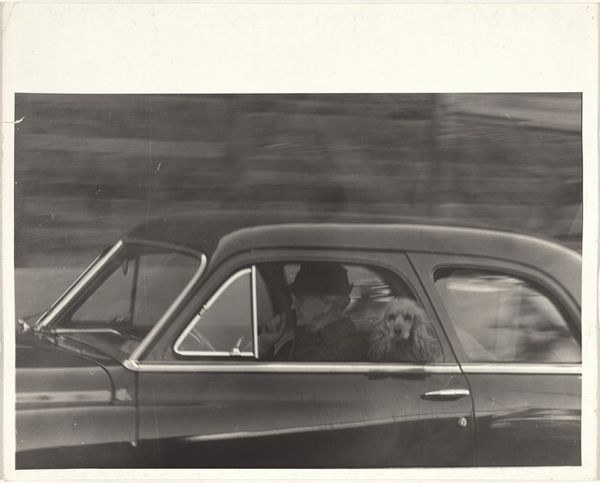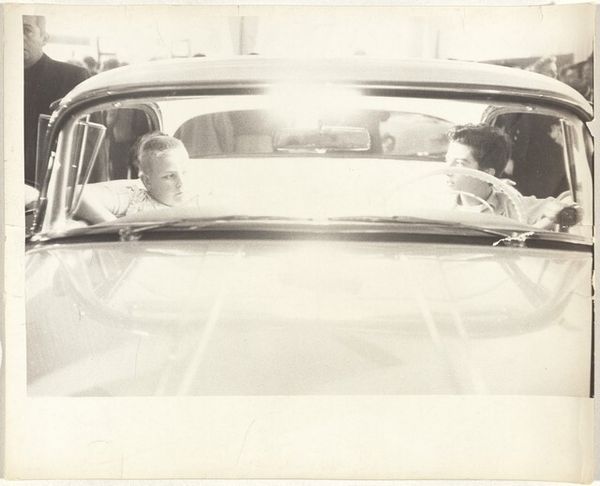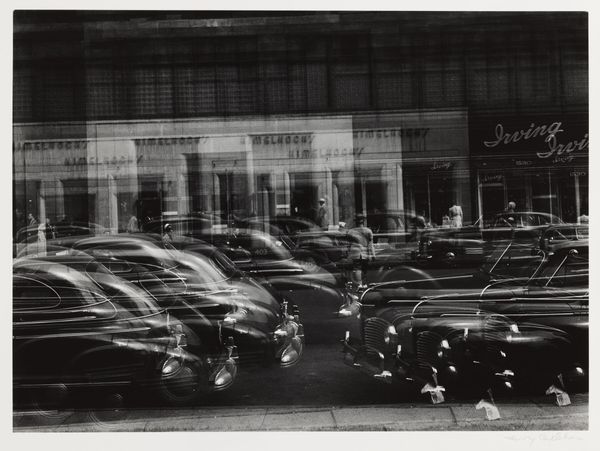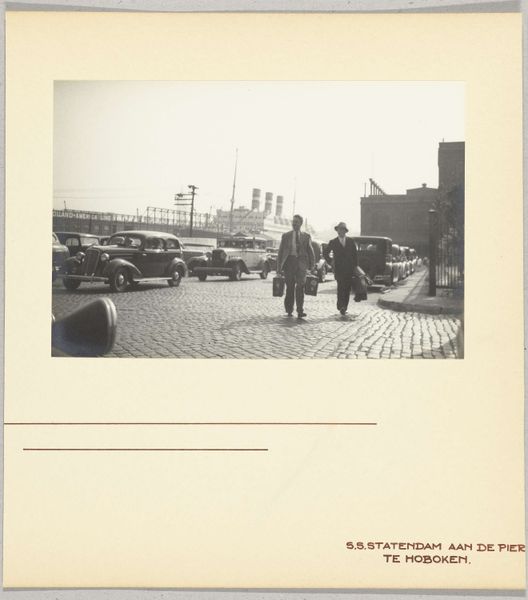
Dimensions: overall: 35.5 x 27.5 cm (14 x 10 13/16 in.)
Copyright: National Gallery of Art: CC0 1.0
Editor: Robert Frank’s "From the Bus, New York", a gelatin silver print from 1958, presents an intimate street view framed by a car window. I notice the contrast between the somewhat blurred cityscape and the sharpness of the hand holding a cigarette. What's your interpretation of this work? Curator: Frank's work here, like much of "The Americans," uses the gritty reality of everyday life to expose societal tensions. This isn't just a photograph of a cityscape; it’s a glimpse into the isolation and alienation felt within urban spaces. Editor: Isolation? How so? Curator: Consider the hand extending out of the car window. It's a fleeting, almost desperate, connection with the outside world, yet separated by glass and metal. The cigarette could be interpreted as a symbol of nervous energy, a coping mechanism in the face of an overwhelming environment. And who is in that car? What does the composition say about class, privilege, and the observer's position? Editor: I hadn't thought about it that way, seeing it more as just a snapshot of a moment. So the photograph challenges the idealized vision of post-war America? Curator: Exactly. Frank, an immigrant himself, captured the undercurrents of American society that were often ignored. What he gives us isn't some rosy postcard, but a critical view, opening dialogue around socio-economic disparities, racial segregation, and existential loneliness, particularly in this 'modern' urban setting. What strikes you most now, after considering this? Editor: It is the silent commentary – like Frank encourages viewers to question what they see and look beneath the surface of normalcy. I see the composition in a new way now. Curator: Precisely, art can be a powerful means of provoking important cultural discussions and prompting reflection about our own place in society.
Comments
No comments
Be the first to comment and join the conversation on the ultimate creative platform.
